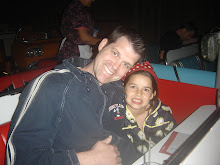To achieve maximum clubhead speed and efficient energy transfer to the ball, make sure to incorporate these key ingredients into your practice lessons:
Square Club Face, Square Swing Path At impact there is no substitute for a clubface that is square to the target, and a square swing path. Face angle at impact can directly influence, faster or slower, a golf ball's initial velocity. Couple proper face angle with a correct swing path and you will gain serious bonus miles per hour of ball speed. Use a computerized system to measure and monitor the relationship between club head speed to ball speed, recently coined the smash factor.
Open clubfaces and an out-to-in path will cause glancing blows that decrease the distance a ball will travel. Hit the Sweet Spot Aside from an assortment of club lengths, weights, lofts, and shaft flexes that assist in maximizing your length, the next most important criteria for distance is centeredness of contact. Hitting the ball in the sweet spot, a challenge for most, will create better control of the ball flight and improve your distance. Try using some impact tape on your clubface if you are curious about how regularly you contact the center of the club. Hands First Another weak spot found at impact in most amateur's swings is the inability to get their shafts to lean toward the target as they strike the ball.
Trapping or pinching the ball will naturally deloft a club, effectively giving you more smash factor. Making sure that your hands win the race to impact before the club head is critical and common in all good ball strikers. Combine Power and Control In order to achieve these classic fundamentals and increase your distance, make sure to check your swing mechanics regularly. To attain higher clubhead speed, proper setup is mandatory to maximize your efforts. Once the swing is in motion, make sure to shift your weight properly, keep your swing arc as wide as possible, and accelerate through the ball using body rotation. The Pirelli Tires company has a slogan that says, "Power is nothing without control". This also holds true for the golf swing. All the speed you gain will only be useful if you can keep the ball in play.
Proper Weight Shift Monitor a proper weight shift by primarily using your upper body as the engine of the backswing to load up energy into your rear leg. Having a low, one-piece takeaway promotes a wider swing arc and actually gives you a head start in the direction of your weight shift. Most short hitters snatch the club head up early in the backswing, causing their arms to fold inward to their chest, decreasing their swing radius and eliminating a proper weight shift. Try to use a video system to keep working on the backswing moves until you can make clean crisp contact. After creating a good coil of your torso (X-factor) in the backswing, it is important to use your lower body as the engine of the downswing. The hips and shoulders can rarely be too open at impact, so start cranking up your rotation speeds and driving your weight back toward the target simultaneously.
Testing the biomechanics of over 200 Tour Players including their rotation speeds through impact and have discovered that professionals on average turn 28% faster than the amateurs we teach. Sometimes equipment will help, but a golfer must also give it a good rip if they expect to gain yardage. So if you want to increase your clubhead speed and overall distance then quit being so nice to the ball and pull a Nike -- "Just Do It".
Subscribe to:
Post Comments (Atom)

No comments:
Post a Comment